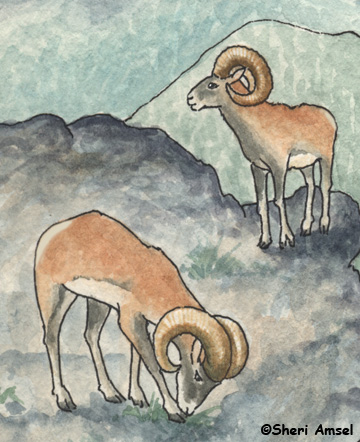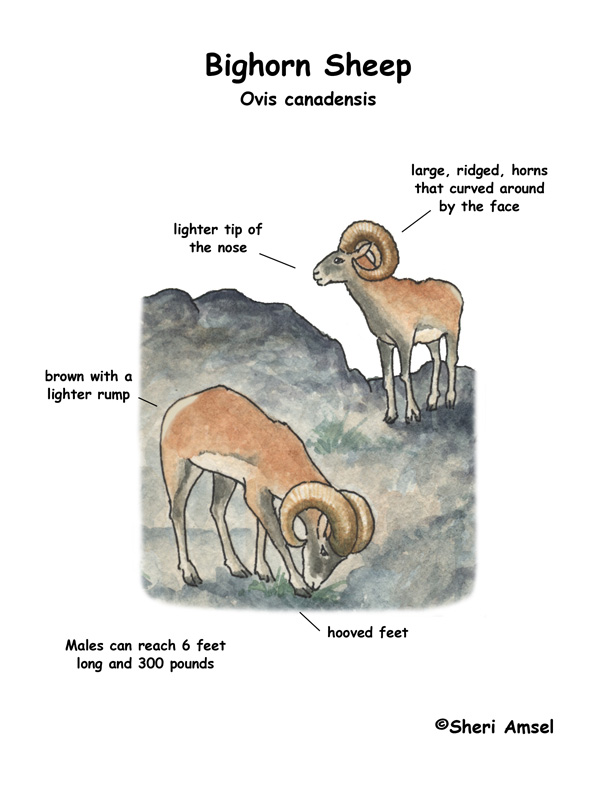

They are found in southwestern Canada south through the western U.S. and Rocky Mountain region to northern Mexico. They can be found in dry, rugged areas of Texas west to California.
They live in the mountains in rocky, dry terrain and high desert.
They are brown with a lighter rump and tip of the nose. They have large, ridged, horns that curve around by the face. Both sexes have horns, though in males they grow much larger. Unlike antlers, horns are not shed yearly. They keep them throughout their lives and they keep growing from year to year. Males are larger than females in general and can reach 6 feet long and 300 pounds. They have hooved feet with thick pads made for traveling in rocky places.
They are active during the day (diurnal) and travel in big herds.
They eat grass and shrubs.
They are killed by mountain lions, wolves, and man.
Males compete for females by ramming heads with smashing blows. Females are pregnant for 6 months (gestation) and have 1 kid.
They can live more than 20 years, but usually less. They are listed as Lower Risk - conservation dependent.
Kingdom: Animalia
Phylum: Chordata
Subphylum: Vertebrata
Class: Mammalia
Order: Artiodactyla
Family: Bovidae
Subfamily: Caprinae
Genus: Ovis
Species: Ovis canadensis
When you research information you must cite the reference. Citing for websites is different from citing from books, magazines and periodicals. The style of citing shown here is from the MLA Style Citations (Modern Language Association).
When citing a WEBSITE the general format is as follows.
Author Last Name, First Name(s). "Title: Subtitle of Part of Web Page, if appropriate." Title: Subtitle: Section of Page if appropriate. Sponsoring/Publishing Agency, If Given. Additional significant descriptive information. Date of Electronic Publication or other Date, such as Last Updated. Day Month Year of access < URL >.
Amsel, Sheri. "Bighorn Sheep" Exploring Nature Educational Resource ©2005-2024. December 14, 2024
< http://exploringnature.org/db/view/Bighorn-Sheep >

